
The
streets of America have been lined
since colonial times with citizens
who turn out to celebrate parades
commemorating national holidays,
historic events and hometown heroes.
Parade flags, affixed to sticks and
waved when marching in parades or
observing parades and other
patriotic events, are a part of our
history. They differ from
typical pieced-and-sewn flags in
that they were not often
manufactured to survive long periods
being flown from a flag staff.
They were often intended to be used
and discarded. The gauze-like
materials often used for parade
flags are thin and brittle, though
the paint applied to them has
fortunately contributed to their
survival by protecting and
reinforcing the threads of the
fabric. While these flags
weren't intended for long outdoor
usage, they do survive in large
numbers, though earlier star counts
and unusual star patterns are rare
and most desired by collectors.
Below are some examples of early
printed parade flags.
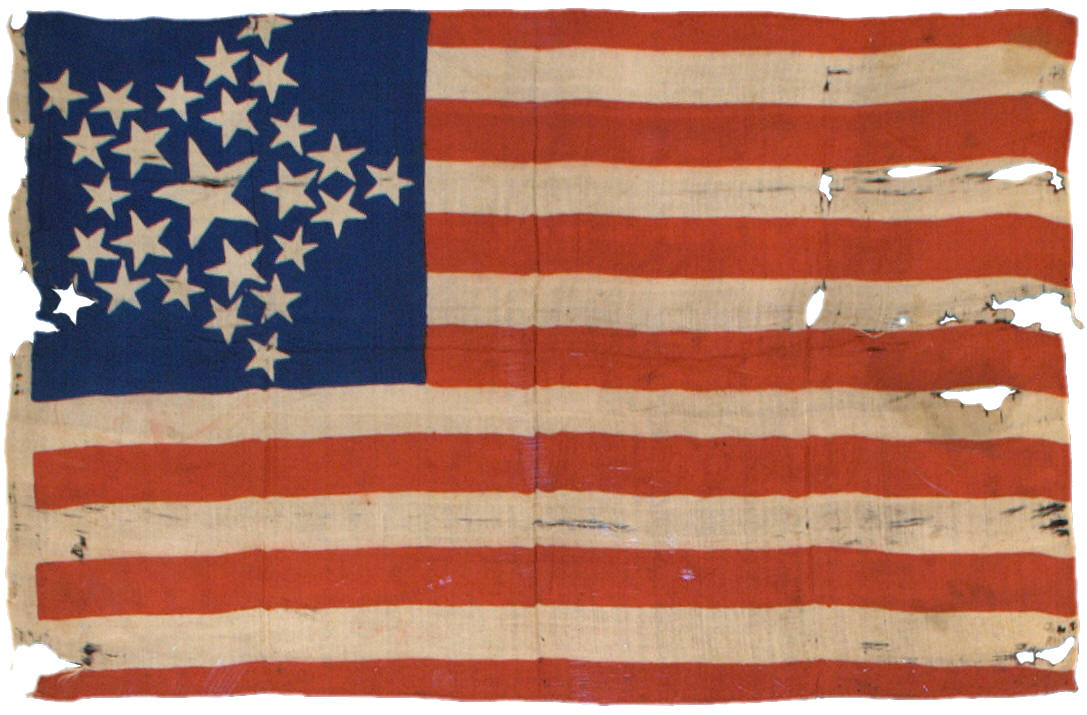 |
26 Stars, 1837-1845.
This flag, descended in the
Decatur family, features 26
stars printed in the form of
a Great Star or Grand
Luminary pattern. The
flag is block-printed onto
silk, and remains remarkably
vibrant, especially
considering it is
approximately 175 years old.
The earliest known printed
parade flags date from this
period, and no printed
parade flags with star
counts less than 26 are
known to exist. Only a
small handful of 26 star
parade flags have survived,
and this flag is one of
them. |
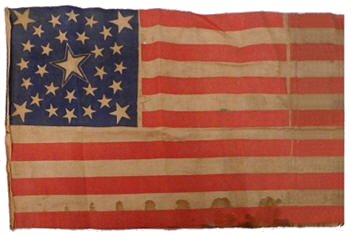 |
30 Stars, 1848-1851.
This well made and
attractive parade flag of 30
stars pre-dates the Civil
War and is very rare.
This style of printed parade
flag, which consists of a
medallion pattern with a
double wreath of stars, four
corner stars, and a large
haloed center star, was
produced in several star
counts, up to and including
42 stars, but the earliest
of the type is the 30 star
variation shown here.
The coloration on this flag,
despite being 160 years old,
remains vibrant and bold.
The flag commemorates
Wisconsin's statehood and is
among the earliest of all
printed parade flags. |
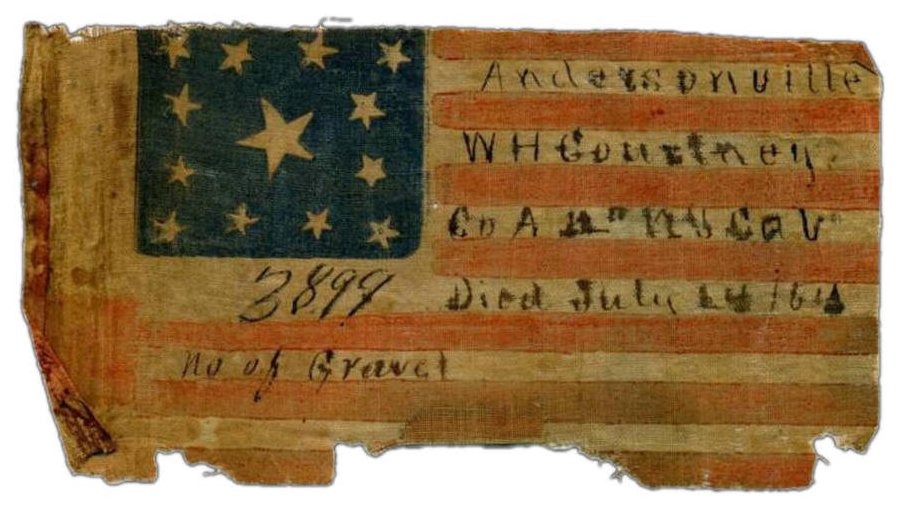 |
13 Stars, 1864. Andersonville Prison
Memorial of W. H. Courtney,
A Co., 12th New York
Volunteers, 1864.
One of the most personal and
poignant relics to have
survived the American Civil
War, this flag was present
in Andersonville Prison and
commemorates the death of
Private William Courtney on
July 14, 1864. A more
detailed description of the
flag can be found
here. Small parade
flags such as this were
often carried by Union
soldiers in their uniforms
or between the pages of
their bibles. They kept
them hidden if they were
captured and rallied around
them on celebration day such
as the 4th of July for morale. |
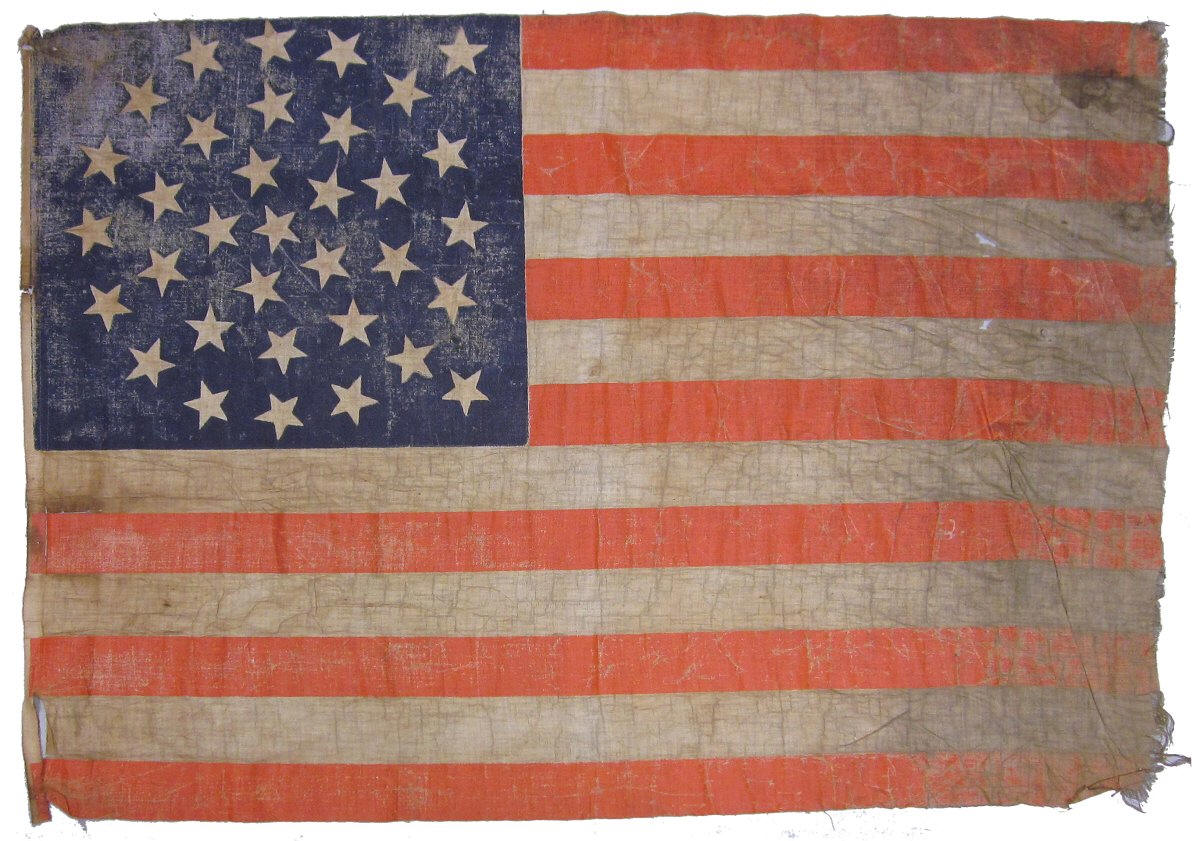 |
34 Stars, 1861.
This flag of 34 stars was
found during the renovation
of a small house in New York
State. The flag was
rolled and sealed inside the
wall of the house, where it
remained for more than 100
years. The flag is in
its original state, as
found, and is remarkably
large in size for a
surviving printed parade
flag. At 26" x 37",
more than 2 feet x 3 feet,
it is a remarkable surviving
printed parade flag from the
early days of the American
Civil War. Its triple
medallion pattern, with two
outliers, continued to be a
popular pattern on printed
parade flags through the
Centennial period, but this
is one of the earlier
examples of the type. |
|
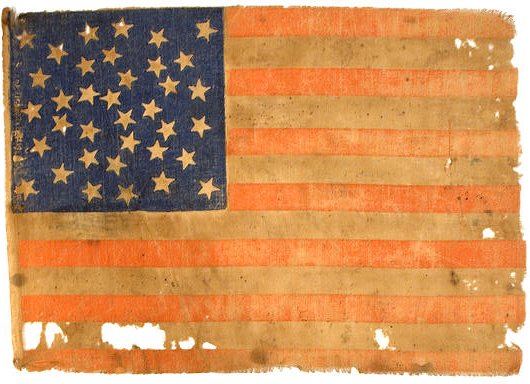 |
36 Stars, 1865.
This flag, a great rarity
among printed parade flags,
features a beautiful pattern
known as the "Great Star in
a Wreath". The pattern
is difficult to discern when
the flag is oriented
horizontally, but when
vertical it is easier to see
the great star, whose tip
stars are shared by the
surrounding wreath of stars.
The addition of two inner
stars also makes the pattern
more difficult to discern at
first glance. It's
possible the maker of the
flag originally produced the
pattern in 34 stars, and
added two inner stars to the
design in subsequent years
as West Virginia and Nevada
joined the Union. |
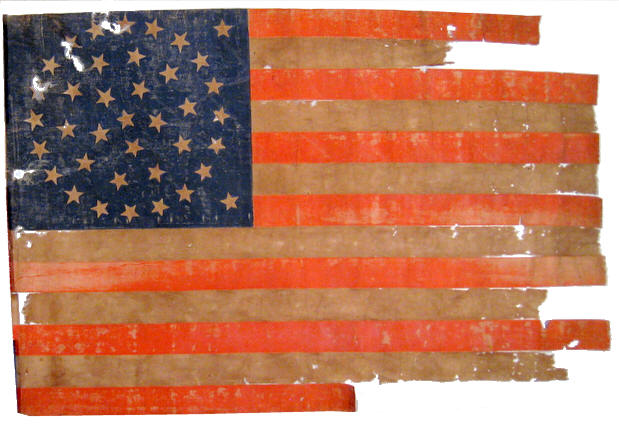 |
38 Stars, 1876.
A printed parade flag
of the Centennial era, this
is one of the largest sizes of
printed parade flags known,
being over 50 inches long.
Parade flags in this size
range are very rare.
Damage to the fly end and
evidence of tacking on the
hoist end indicate that this
flag was flown and
experienced some early wind
damage. The white
stripes, unprotected by the
paint used for printing the
flag, have oxidized and are
brittle. This flag was
recently saved from complete
destruction, having been
found among discarded items
at a community dump and
recycling center. |
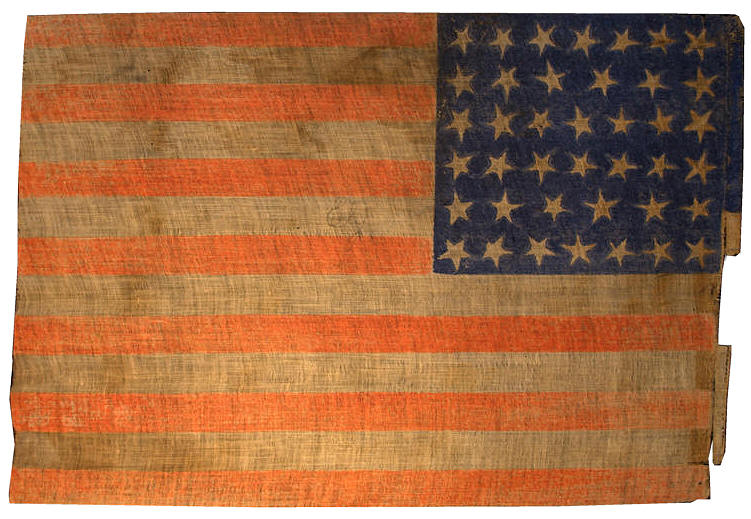 |
40 Stars, 1889.
This beautiful printed
parade flag of 40 stars
features bright chrome
orange stripes and a vivid
blue canton. One of
the rarer star counts, this
flag was printed on what
today we consider the back
of the flag, though during
this period Americans were
not as rigid in their
specifications, making this
orientation equally correct.
"Ely", lightly written in
pencil in the center of the
flag is most likely the name
of the original owner of the
flag. |
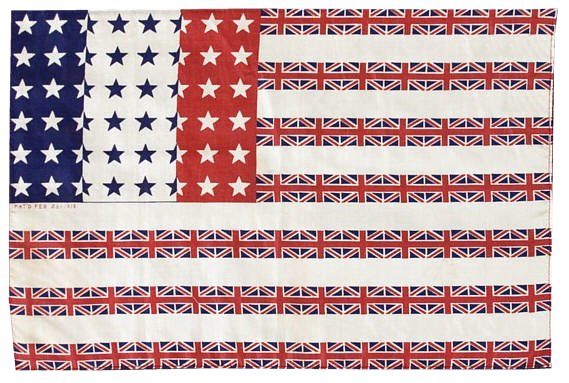 |
1918.
This parade flag, printed on
silk, is one of the most
unusual graphical
representations of the
American Flag known.
Marked with "Pat'd Feb 26,
1918", the flag's use of the
French Tricolor in the
canton, the British Union
Jack for the stripes, and
the overall form of the
American Stars and Stripes
is both visually arresting
and a unique show of
alliance during World War I.
Less than twenty of these
remarkable flags, named by
collector Boleslaw Mastai as
the "Franco-Anglo-American
Flag", are known to exist. |
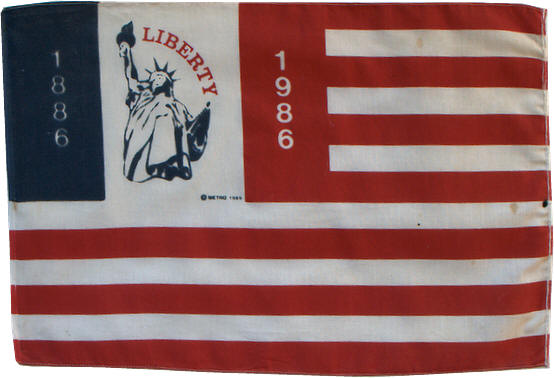 |
1986.
This printed parade flag is
an excellent example of a
modern flag whose special
qualities make it a future rare
flag worthy of collecting
and preserving.
Made for the celebration of
the Statue of Liberty
Centennial in 1986, it
possesses several highly
unusual and rare qualities
that combine to form a great
flag. It is tied to a
significant and recognizable
American historical event.
It is also only one of two
known styles of an American
flag with the French
Tricolor in the canton.
Furthermore, it is one of
the few flags possessing a
graphic in the canton, and
lastly it features the rare
presence of writing on the
flag, to include event dates
and that spectacular
American sentiment,
"Liberty". |
|
 |
Next:
Stars |
 |
|
|

